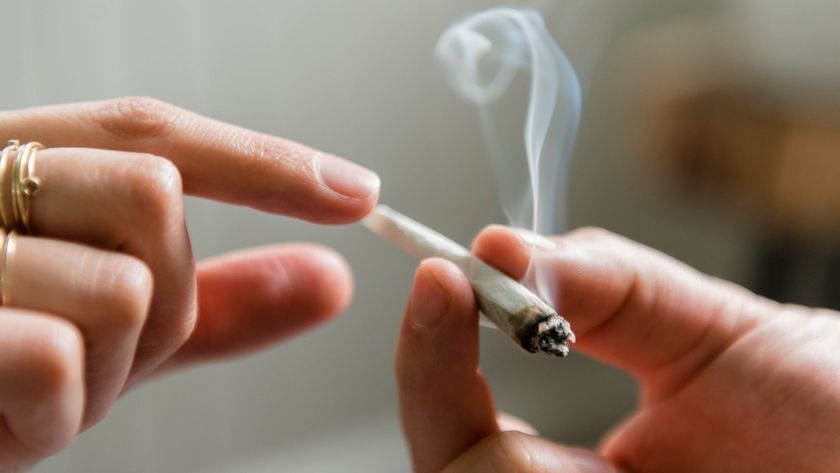This Mysterious Marijuana Syndrome Is Relieved by Hot Showers

A mysterious vomiting condition tied to marijuana use has an even stranger antidote: hot showers.
The condition, called cannabinoid hyperemesis syndrome, is characterized by recurring bouts of severe nausea, vomiting and abdominal pain in heavy marijuana users, who often take hot showers to relieve their symptoms. The condition was first recognized in 2004, but U.S. doctors have reported seeing it more frequently in recent years, according to the New York Times.
Indeed, a recent study of heavy marijuana users (who smoked at least 20 days per month) in New York found that about one-third of users reported symptoms consistent with cannabinoid hyperemesis syndrome — meaning they experienced nausea and vomiting that was relieved by hot showers. If the results were extrapolated to the entire country, an estimated 2.7 million Americans could suffer from cannabinoid hyperemesis syndrome or a similar condition, the researchers said. (Even so, it's unclear if these results can be extrapolated to other areas.) [25 Odd Facts About Marijuana]
But what causes this condition, and why would hot showers relieve people's symptoms?
Doctors can't answer either of those questions, and any attempts to explain exactly what's going on are "pretty hypothetical," said Dr. Kennon Heard, a toxicologist at UCHealth's University of Colorado Hospital in Aurora, who has studied cannabinoid hyperemesis syndrome.
But doctors do know that long-term use of drugs can result in changes in the brain and the nervous system, Heard said. In addition, doctors know that endogenous cannabinoids — compounds in the body similar to those found in marijuana — are integral to the body's pain system, Heard said.
So one idea is that long-term stimulation from the ingredient in marijuana that produces a "high" — tetrahydrocannabinol (THC) — alters the body's pain system in a way that results in the symptoms of cannabinoid hyperemesis syndrome.
Sign up for the Live Science daily newsletter now
Get the world’s most fascinating discoveries delivered straight to your inbox.
"Something in the pain system is disturbed by having THC around all the time," Heard told Live Science.
If this is the case, hot showers may help to relieve symptoms because the stimulation from the hot water produces a different sensory signal that distracts the body from the pain signal. "Your body can only process so many signals at once," Heard said.
Still, this remains a hypothesis, and doctors don't know why some marijuana users develop this condition, while others do not. Indeed, medical marijuana is sometimes prescribed to relieve nausea and vomiting in cancer patients undergoing chemotherapy.
Heard said that when he first heard of this condition about 15 years ago, he was skeptical that it was a real condition. But now, he's no longer skeptical, and the condition is "something we see in our ER several times a week, if not on a daily basis."
The condition is not life-threatening, but "it certainly is disabling," said Heard, who noted that patients may go to the ER three to four times a week, or need to stay home to shower often. In 2010, researchers found that the average patient with cannabinoid hyperemesis syndrome went to the emergency room seven times, and was given a (mistaken) diagnosis three times, before being diagnosed with their condition.
But there is a cure for the condition — quitting marijuana. In a 2017 review study, Heard's colleagues found that 97 percent of people with cannabinoid hyperemesis syndrome stopped experiencing the symptoms after they stopped smoking marijuana.
Original article on Live Science.

Rachael is a Live Science contributor, and was a former channel editor and senior writer for Live Science between 2010 and 2022. She has a master's degree in journalism from New York University's Science, Health and Environmental Reporting Program. She also holds a B.S. in molecular biology and an M.S. in biology from the University of California, San Diego. Her work has appeared in Scienceline, The Washington Post and Scientific American.












